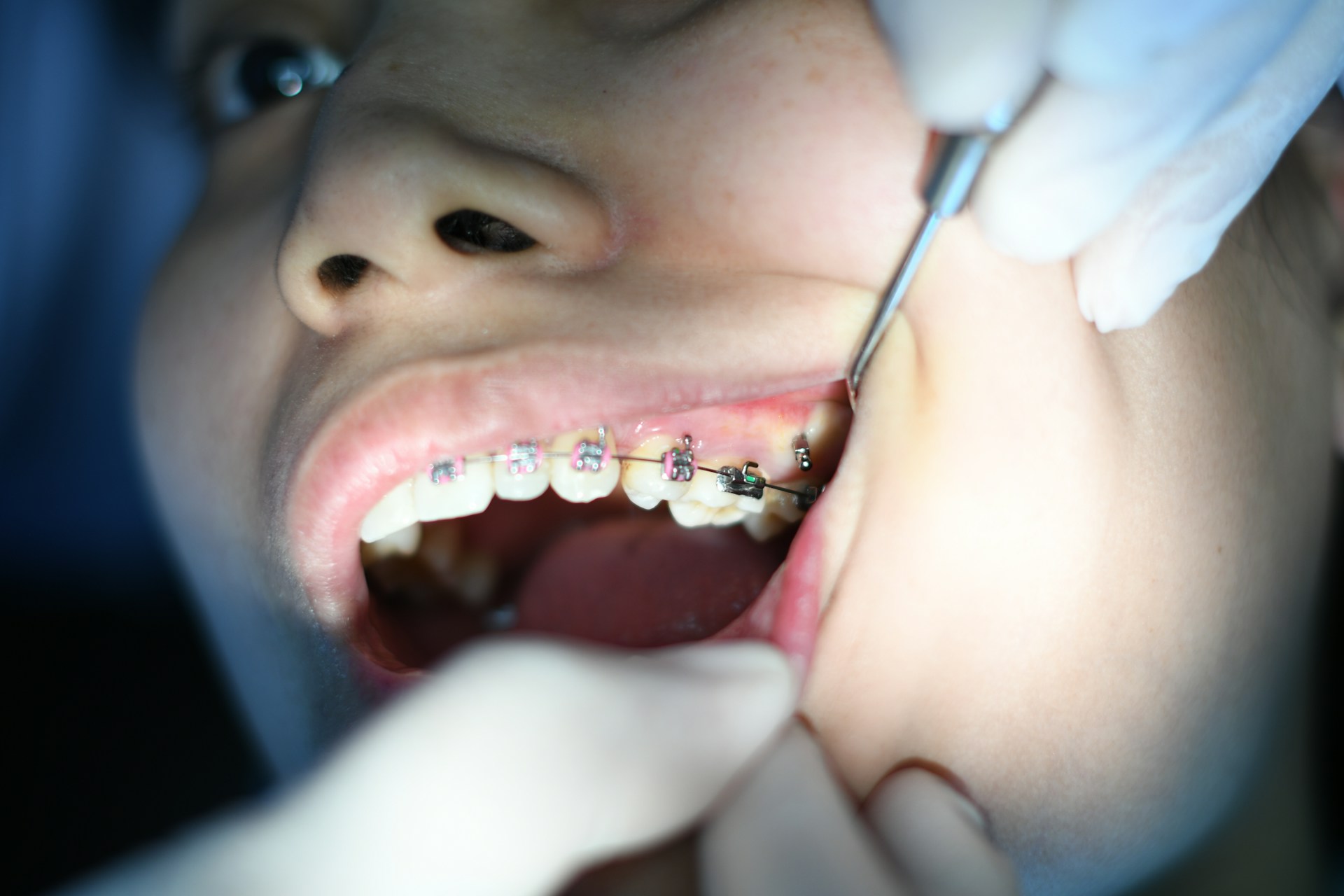Beginning the orthodontic treatment journey with braces may seem daunting at first, but having a roadmap of the stages ahead can alleviate uncertainty and prepare you for the process. At Dischinger Orthodontics, we prioritize guiding our patients through each phase of their orthodontic experience, ensuring they are well-informed and supported every step of the way.
In this article, we’ll delve into the various stages of braces treatment, spanning from the initial consultation to the final retention phase. By gaining insights into the progression of orthodontic care, you’ll gain a clearer understanding of what to anticipate and how Dischinger Orthodontics can assist you in achieving the smile you’ve always desired. So, let’s embark on this journey together and explore the stages of braces treatment!
1. Pre-Treatment Phase
Before braces placement, patients undergo a comprehensive examination and consultation with our experienced orthodontic team at Dischinger Orthodontics. This pre-treatment phase is crucial as it allows us to assess the current condition of the patient’s teeth and jaws, discuss treatment objectives and options, and address any queries or concerns they may have.
Typically, the pre-treatment phase kicks off with a thorough evaluation of the patient’s oral health, which includes x-rays, photographs, and impressions of the teeth. These diagnostic assessments enable us to formulate a personalized treatment plan tailored to the unique needs of each patient.
At Dischinger Orthodontics, we place great emphasis on open communication and collaboration with our patients. We take the time to comprehensively explain the proposed treatment plan, covering aspects such as the various stages of braces treatment, the anticipated duration of treatment, and the types of braces that may be recommended.
During this phase, patients are encouraged to ask questions and share any preferences they may have regarding their orthodontic treatment. Our team is dedicated to ensuring that patients feel empowered and well-informed throughout the entire process, from the initial consultation to the completion of treatment.
2. Placement Phase
Once the pre-treatment phase concludes and the treatment plan is finalized, patients are prepared to enter the placement phase of braces treatment. This stage officially initiates orthodontic treatment and involves the actual attachment of braces to the teeth.
At Dischinger Orthodontics, we utilize cutting-edge techniques and materials to ensure a comfortable and efficient braces placement process for our patients. Our orthodontic team boasts extensive skill and experience in performing this procedure, enabling us to achieve optimal outcomes with minimal discomfort.
During the placement phase, patients visit our office for the installation of their braces. The process commences with a thorough cleaning and drying of the teeth to ensure proper adhesion of the bonding materials. Subsequently, each bracket is meticulously positioned on the tooth’s surface, and a specialized dental adhesive is utilized to secure the brackets in place.
Following the attachment of all brackets, the orthodontist affixes the archwire onto the brackets using small elastic bands or metal ligatures. This archwire applies gentle pressure to the teeth, progressively guiding them into their desired positions over time.
Throughout the placement phase, our team closely monitors the patient’s progress and makes any necessary adjustments to ensure the braces function effectively. Recognizing that this phase represents a significant milestone for many patients, we strive to deliver a supportive and positive experience at every juncture.
3. Adjustment Phase
Following the placement of braces, patients transition into the adjustment phase, which entails regular visits to our orthodontic office for adjustments and progress monitoring. This phase plays a pivotal role in ensuring the braces’ effectiveness and the alignment of teeth according to the treatment plan.
During each adjustment appointment, the orthodontist will perform any necessary modifications to the braces, such as tightening the archwire or replacing elastic bands. These alterations help maintain consistent pressure on the teeth, crucial for achieving optimal outcomes.
At Dischinger Orthodontics, we recognize the uniqueness of each patient’s orthodontic journey, tailoring our treatment approach to address their specific needs. Our team is dedicated to providing personalized care and guidance throughout the adjustment phase, empowering patients with confidence in their treatment progress.
Throughout this phase, patients may experience some discomfort or soreness following adjustments, which is normal and typically resolves within a few days. Our team offers advice on managing any discomfort, ensuring patients remain comfortable throughout their treatment.
The adjustment phase typically spans several months to years, contingent on the case complexity and treatment objectives. During this period, patients witness gradual movement of their teeth into the desired positions, resulting in a beautiful and functional smile.
In summary, the adjustment phase is integral to the braces treatment process, and our team at Dischinger Orthodontics is dedicated to delivering exceptional care and support at every stage.
4. Progress Monitoring Phase
Once braces have been adjusted and treatment is underway, patients transition into the progress monitoring phase. This phase entails regular check-up appointments to assess how the teeth are responding to treatment and to make any necessary adjustments to the treatment plan.
During progress monitoring appointments, our orthodontic team evaluates the movement of the teeth and the alignment of the bite using various tools and techniques, such as X-rays and 3D imaging. This enables us to track progress accurately and make informed decisions about the next steps in treatment.
At Dischinger Orthodontics, we recognize the significance of closely monitoring progress to ensure that treatment remains on track and that patients achieve the best possible results. Our team is committed to providing comprehensive care and support throughout the progress monitoring phase, addressing any questions or concerns that patients may have along the way.
Throughout this phase, patients continue to visit our office regularly, typically every 4 to 8 weeks, depending on their individual treatment plan. These appointments allow us to make any necessary adjustments to the braces and to address any issues or concerns that may arise.
The progress monitoring phase plays a crucial role in the braces treatment process, enabling us to ensure that treatment progresses as planned and that patients achieve their desired results. Our goal at Dischinger Orthodontics is to deliver exceptional care and support to our patients throughout their orthodontic journey, assisting them in attaining a healthy, beautiful smile that lasts a lifetime.
5. Finalization Phase
The finalization phase marks the culmination of the braces treatment journey. During this phase, the focus is on fine-tuning the results achieved in the previous stages and ensuring that the teeth are in their optimal positions.
In this phase, the orthodontist may make some final adjustments to the braces to perfect the alignment of the teeth and bite. This could involve tightening or loosening specific wires or making changes to the placement of brackets to address any remaining alignment issues.
Alongside these adjustments, the orthodontist evaluates the overall health of the teeth and gums to ensure they are in excellent condition. This may include performing a thorough cleaning and polishing of the teeth to remove any plaque or tartar buildup that may have accumulated during treatment.
Once the orthodontist is satisfied with the results and the teeth are in their ideal positions, the braces are removed. This is an exciting moment for patients, marking the end of their braces journey and the start of a new chapter with a beautiful, straight smile.
After the braces are removed, patients are usually fitted with a retainer to help maintain the new position of their teeth. The orthodontist provides instructions on how to care for the retainer and how often to wear it to ensure the results of treatment are maintained over the long term.
The finalization phase is crucial as it ensures patients achieve the best possible results and enjoy a healthy, beautiful smile for years to come. At Dischinger Orthodontics, we are dedicated to providing exceptional care and support throughout every stage of our patients’ orthodontic journey, from the initial consultation to finalization and beyond.
6. Retention Phase
After the braces are removed, patients transition into the retention phase of their orthodontic treatment. While braces have successfully straightened the teeth, it’s vital to maintain these results and prevent any shifting back to their original positions. This is where retainers step in as crucial players.
Retainers are custom-made devices crafted to hold the teeth in their new positions. Usually made of clear plastic or wire, they are worn over the teeth, typically at night, to prevent any movement. Retainers are essential for ensuring the long-term stability of the results achieved with braces.
During the retention phase, patients receive instructions from their orthodontist on how often to wear their retainers and for how long. Initially, retainers may need to be worn full-time, including during the day and at night, to thwart any unwanted shifting of the teeth. Over time, as the teeth stabilize in their new positions, the wearing schedule may be adjusted, and patients may only need to wear their retainers at night.
Following their orthodontist’s instructions diligently during the retention phase is crucial to maintaining the results of braces treatment over the long term. Failure to wear retainers as directed can result in relapse, where the teeth start to move back towards their original positions. This can reverse the progress achieved with braces and may necessitate additional orthodontic treatment to rectify.
At Dischinger Orthodontics, we recognize the significance of the retention phase in ensuring the success of orthodontic treatment. That’s why we offer personalized care and guidance to our patients to help them navigate this final stage of their braces journey effectively. By adhering to our orthodontist’s recommendations and wearing their retainers as instructed, our patients can enjoy a healthy, beautiful smile for years to come.
Conclusion
The journey through the stages of braces is a transformative one, leading to a healthier and more confident smile. Each stage, from the initial consultation to retention, plays a crucial role in achieving this goal.
During the pre-treatment phase, thorough evaluations lay the groundwork for personalized treatment plans tailored to each patient’s unique needs. The placement phase marks the beginning of active treatment, where braces are installed to realign teeth, and regular adjustments are made to ensure progress.
Throughout the monitoring phase, the movement of teeth is closely tracked, and any necessary fine-tuning is performed to achieve the desired results. Finally, the finalization phase unveils a beautifully aligned smile, marking the completion of active treatment.
The retention phase then comes into play, maintaining the achieved results and preventing any relapse. At Dischinger Orthodontics, we are dedicated to guiding our patients through each stage of their braces journey with expertise and care, helping them achieve their dream smile and long-term oral health.
Ready to brighten your smile? Book a free consult at our orthodontic office in Portland or Lake Oswego today!


